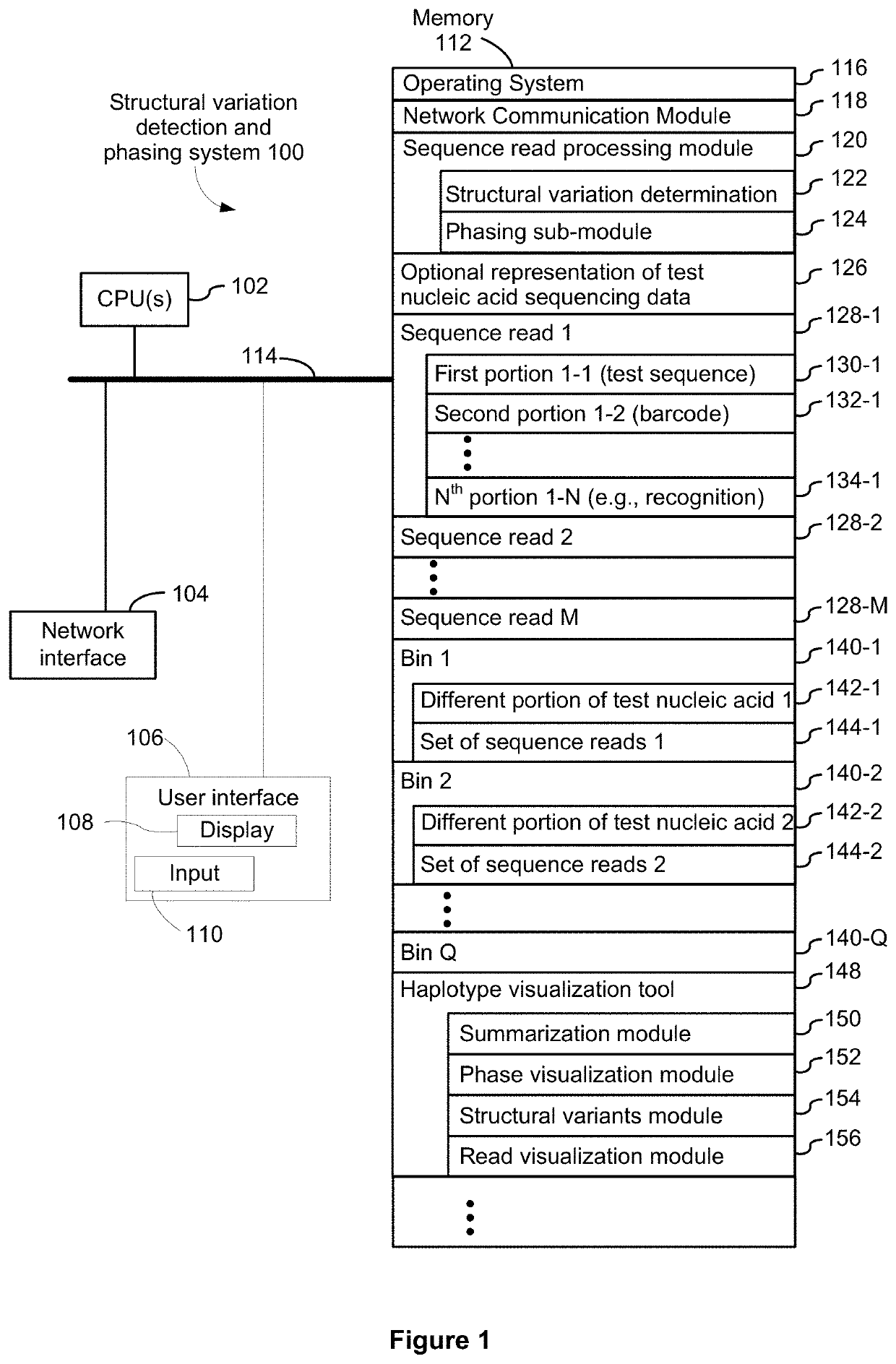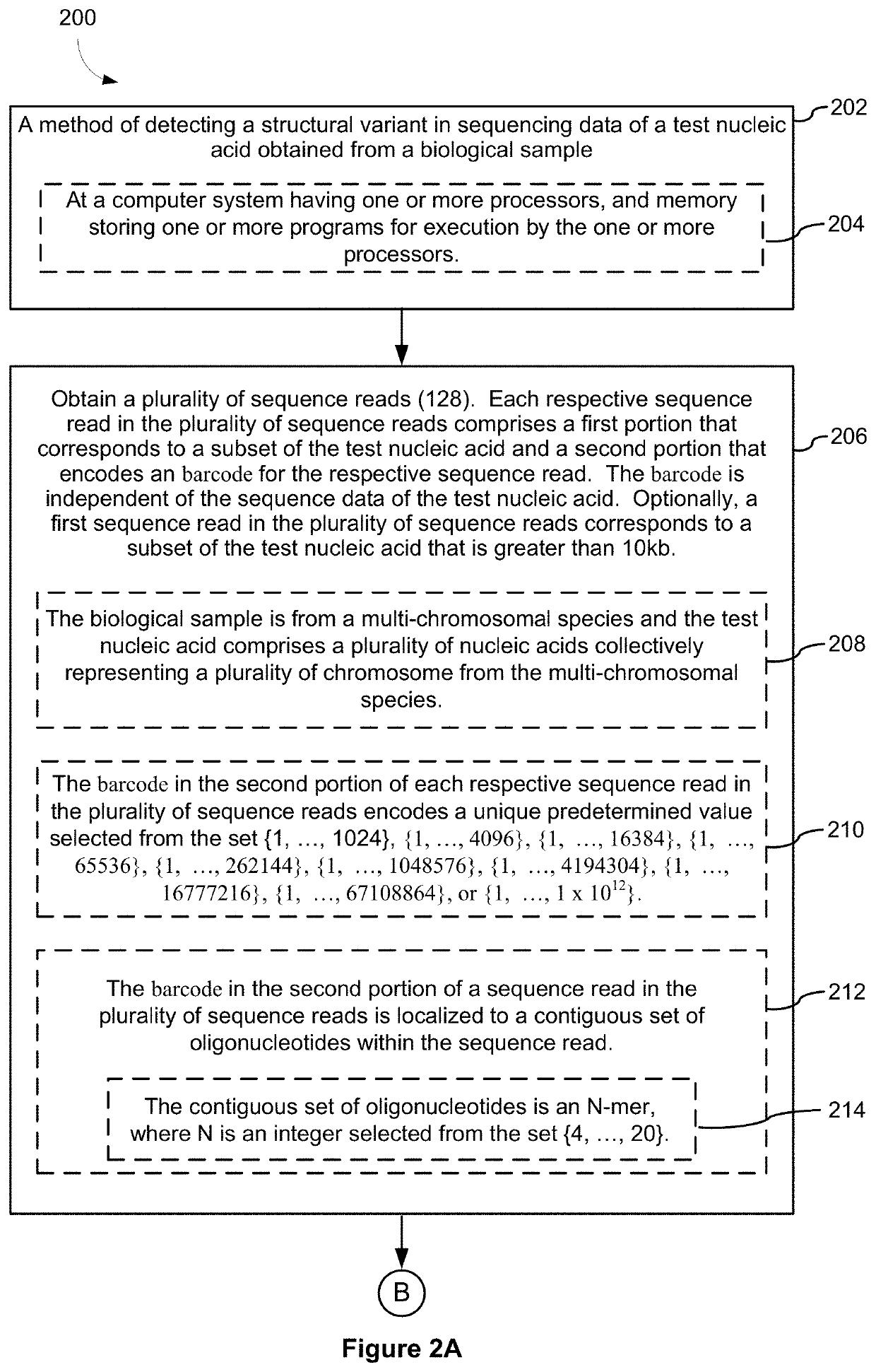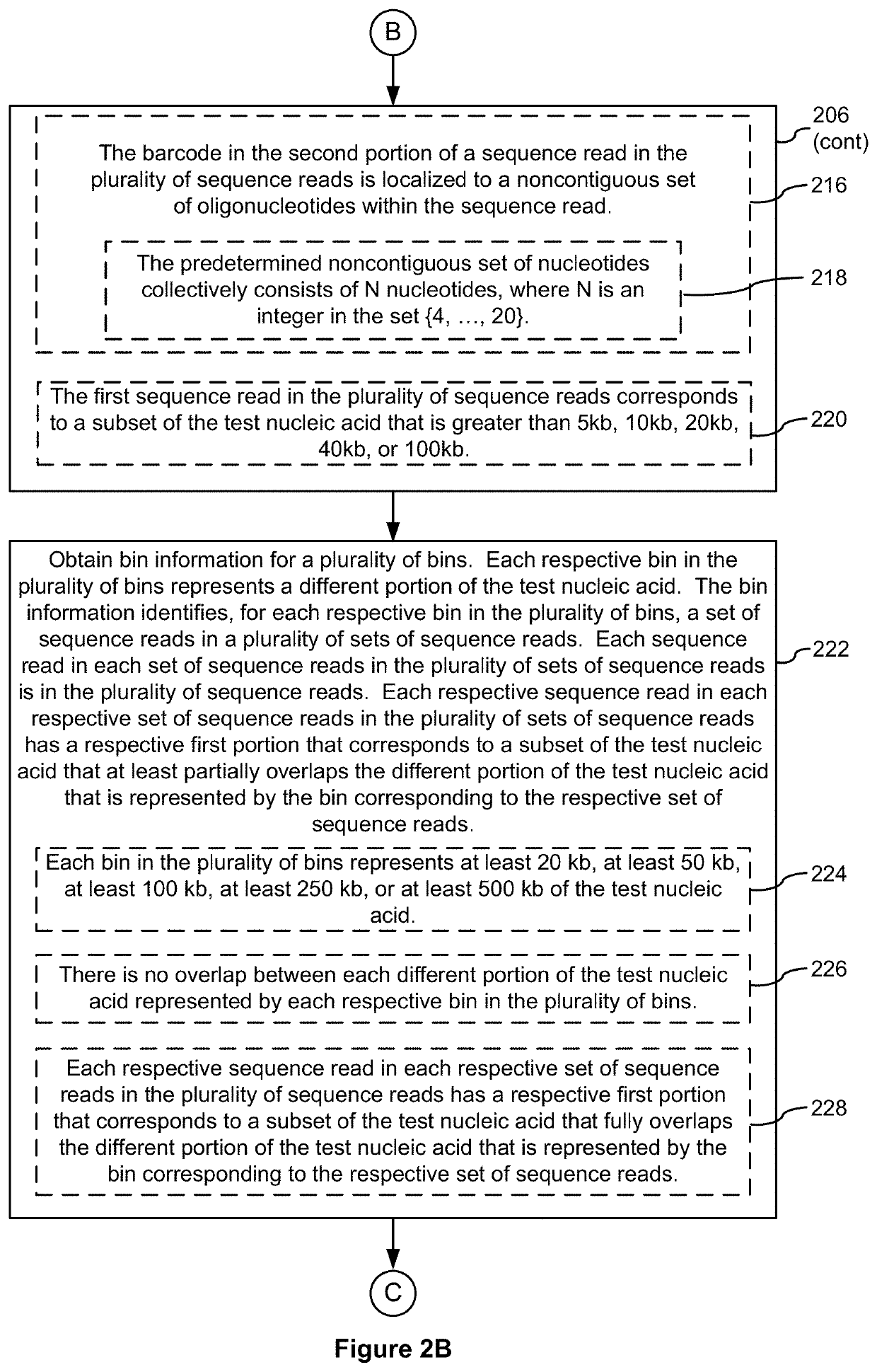Systems and methods for determining structural variation and phasing using variant call data
a variant call and variant naming technology, applied in the field of haplotype phasing and structural variant detection using nucleic acid sequencing data, can solve the problems of np-hard problem, existing algorithms not applicable to targeted sequencing data,
- Summary
- Abstract
- Description
- Claims
- Application Information
AI Technical Summary
Benefits of technology
Problems solved by technology
Method used
Image
Examples
example 1
[0333]Sample preparation. FIG. 8 provides an example of sample preparation in accordance with an exemplary embodiment of the present disclosure. The GemCode Platform massively partitions and barcodes DNA, producing sequencing-ready libraries with >100,000 unique barcodes. Custom algorithms use this barcode information to map reads back to original, long molecules of DNA, creating linked reads that span many tens of kilobases. Long template molecules from ˜1 ng of gDNA are randomly distributed across >100,000 barcoded partitions, giving <10 fg (<0.3% of the genome) per partition. Each partition carries primers with barcodes that are constant within a partition, but distinct across partitions. An amplification reaction creates barcoded short read library fragments within each partition. The resulting library is compatible with standard exome capture, while preserving long range linkage information. In particular, the resulting libraries are sample-indexed and can be whole genome seque...
PUM
| Property | Measurement | Unit |
|---|---|---|
| nucleic acid sequencing | aaaaa | aaaaa |
| density | aaaaa | aaaaa |
| size | aaaaa | aaaaa |
Abstract
Description
Claims
Application Information
 Login to View More
Login to View More - R&D
- Intellectual Property
- Life Sciences
- Materials
- Tech Scout
- Unparalleled Data Quality
- Higher Quality Content
- 60% Fewer Hallucinations
Browse by: Latest US Patents, China's latest patents, Technical Efficacy Thesaurus, Application Domain, Technology Topic, Popular Technical Reports.
© 2025 PatSnap. All rights reserved.Legal|Privacy policy|Modern Slavery Act Transparency Statement|Sitemap|About US| Contact US: help@patsnap.com



